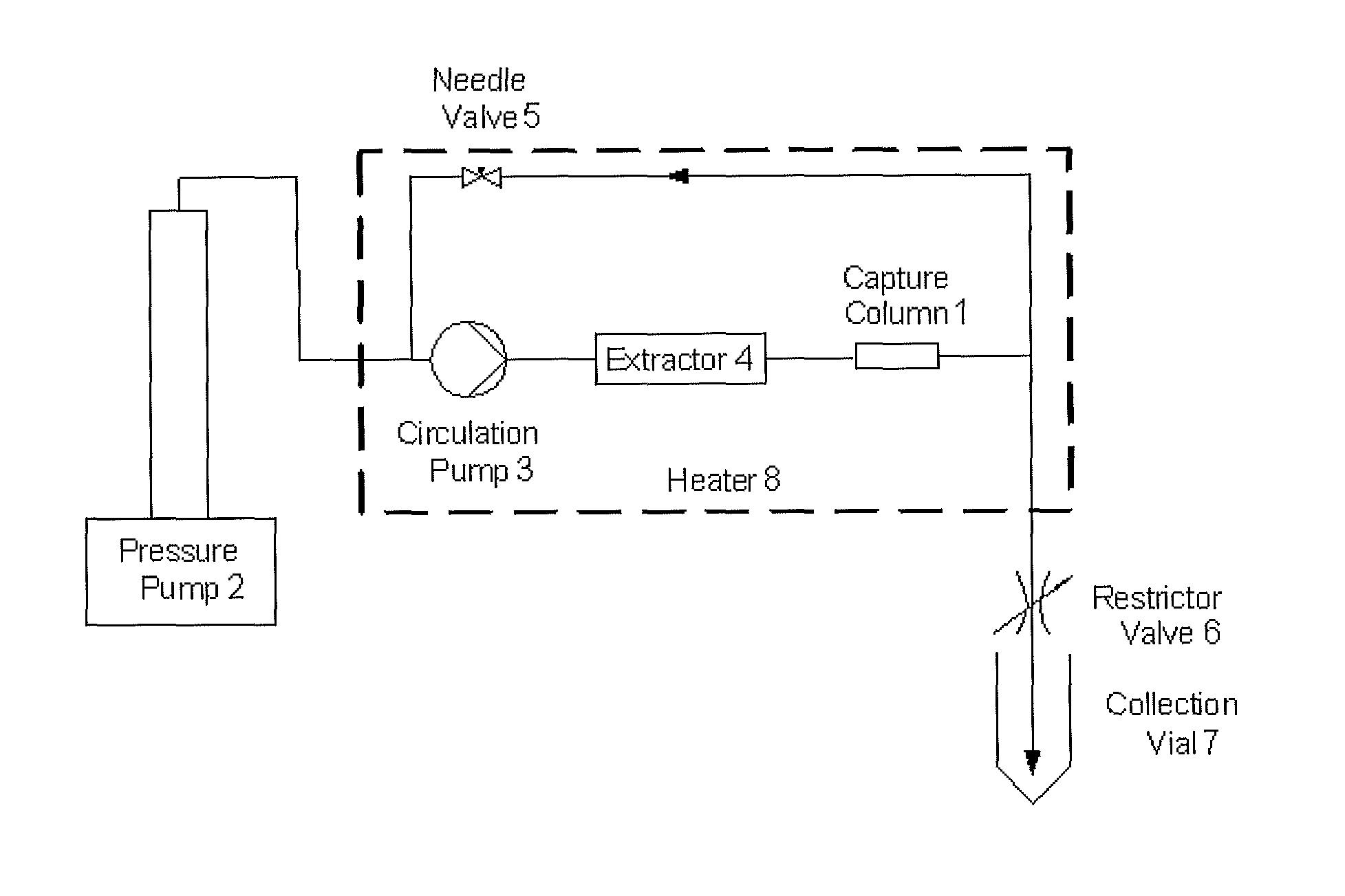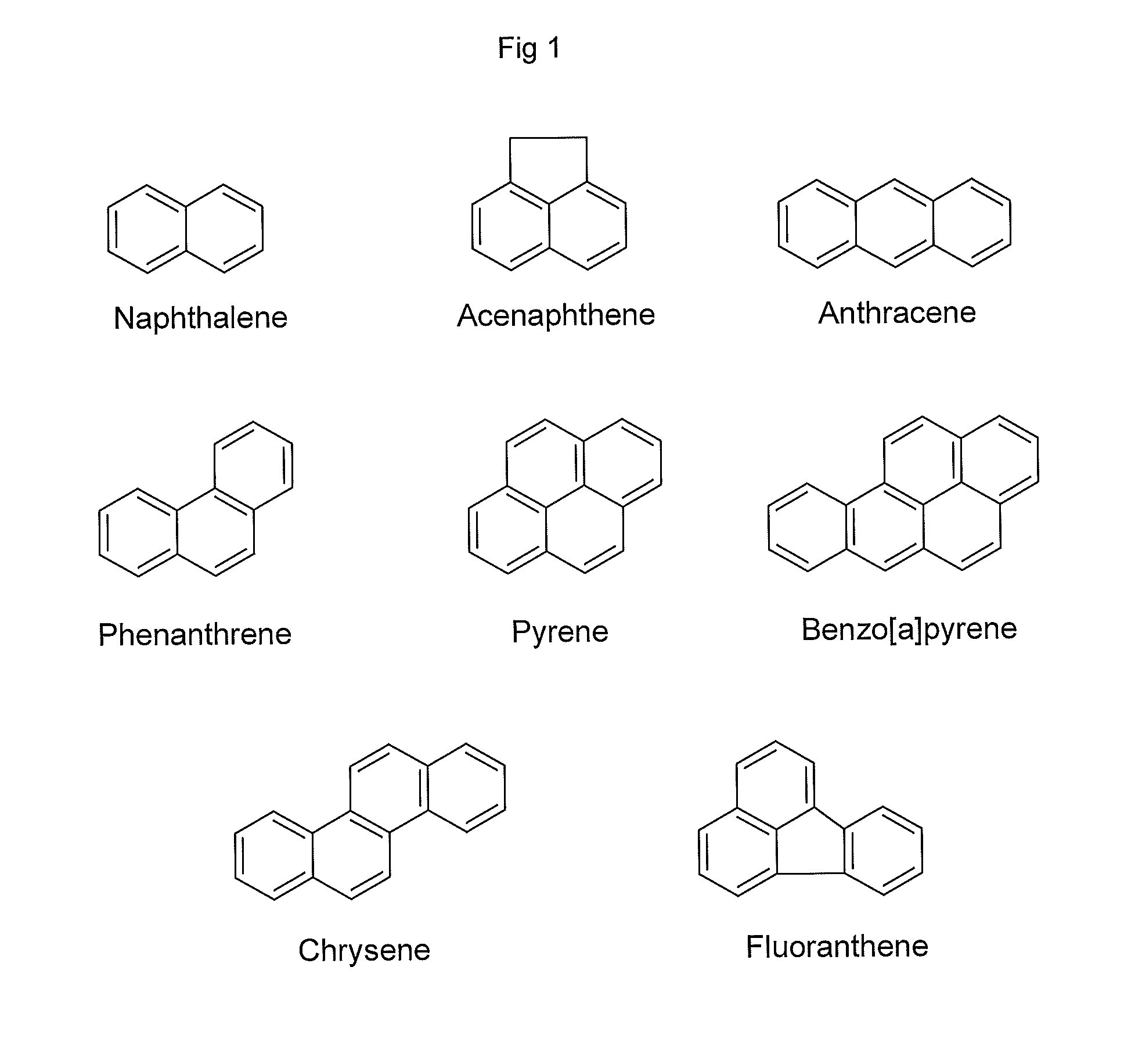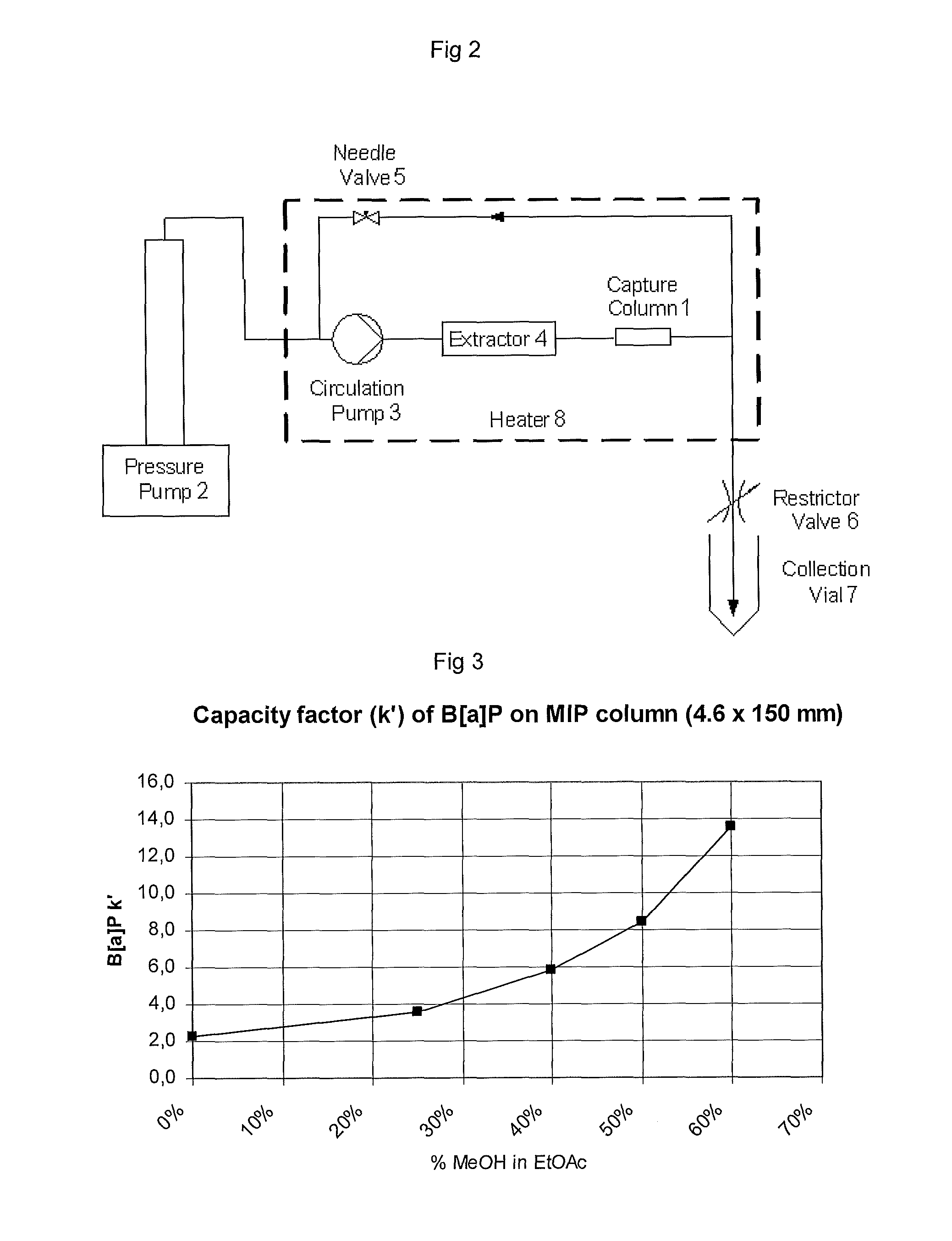Method for Removing Polycyclic Aromatic Hydrocarbons
a technology of aromatic hydrocarbons and extraction methods, which is applied in the direction of fatty oil/fat refining, tobacco, and separation processes, etc., can solve the problems that mips have not performed well in the extraction of polycyclic aromatic hydrocarbons
- Summary
- Abstract
- Description
- Claims
- Application Information
AI Technical Summary
Benefits of technology
Problems solved by technology
Method used
Image
Examples
example 1
[0065]In a typical procedure, a prepolymerisation mixture was prepared by adding the template molecule pyrene (200 mg, 1 mmol), the functional monomer 4-vinylpyridine (0.84 g, 8 mmol), the crosslinker divinylbenzene (5.2 g, 40 mmol), the initiator ABDV (azo-N,N′-bis divaleronitrile) (0.1 g) and the porogen ethyl acetate (18 ml) to a glass bottle. The mixture was sonicated until all components were dissolved and the solution transferred to a reaction bottle together with a pre-made 3% aqueous polyvinylalcohol solution (80 ml). The mixture was stirred for some minutes followed by raising the temperature to 46° C. and after 4-6 h to 65° C. The process was maintained over night. The formed polymer was filtered off and washed with water followed by methanol. The collected material was then sieved through 20-90 micron sieve and washed with ethyl acetate in soxhlet apparatus for 24 h to give 4.5 g white polymer.
example 2
Comparative Example
[0066]The experimental protocol used in Example 1 was followed, but dichloromethane (DCM) was used as porogen. The collected material was then sieved through 20-90 micron sieve and washed with ethyl acetate in soxhlet apparatus for 24 h to give 4.5 g white polymer.
example 3
[0067]HPLC tests with the polymers prepared in example 1 and 2 as well as the corresponding non-imprinted polymers (NIP), i.e. without the template pyrene. The polymers were packed in separate 4.6×150 mm HPLC columns. Benzo[a]pyrene (B[a]P) standard was injected into a mobile phase (15% DCM in acetonitrile) and the response was monitored with a fluorescence detector. The resulting chromatograms were overlayed and are presented in FIG. 5.
[0068]As can be seen the chromatographic behavior for the MIP and NIP using ethyl acetate (EtOAc) are by far superior to the polymers using dichloromethane (DCM) as porogen. The apparent resolution for the NIP / MIP pair is 1.3 for the EtOAc polymers while it is only 0.3 for the DCM polymers. The narrower and more symmetrical peaks for the EtOAc MIP (Example 1) indicate a more homogenous adsorption to the MIP.
PUM
| Property | Measurement | Unit |
|---|---|---|
| Fraction | aaaaa | aaaaa |
| Fraction | aaaaa | aaaaa |
| Fraction | aaaaa | aaaaa |
Abstract
Description
Claims
Application Information
 Login to View More
Login to View More - R&D
- Intellectual Property
- Life Sciences
- Materials
- Tech Scout
- Unparalleled Data Quality
- Higher Quality Content
- 60% Fewer Hallucinations
Browse by: Latest US Patents, China's latest patents, Technical Efficacy Thesaurus, Application Domain, Technology Topic, Popular Technical Reports.
© 2025 PatSnap. All rights reserved.Legal|Privacy policy|Modern Slavery Act Transparency Statement|Sitemap|About US| Contact US: help@patsnap.com



